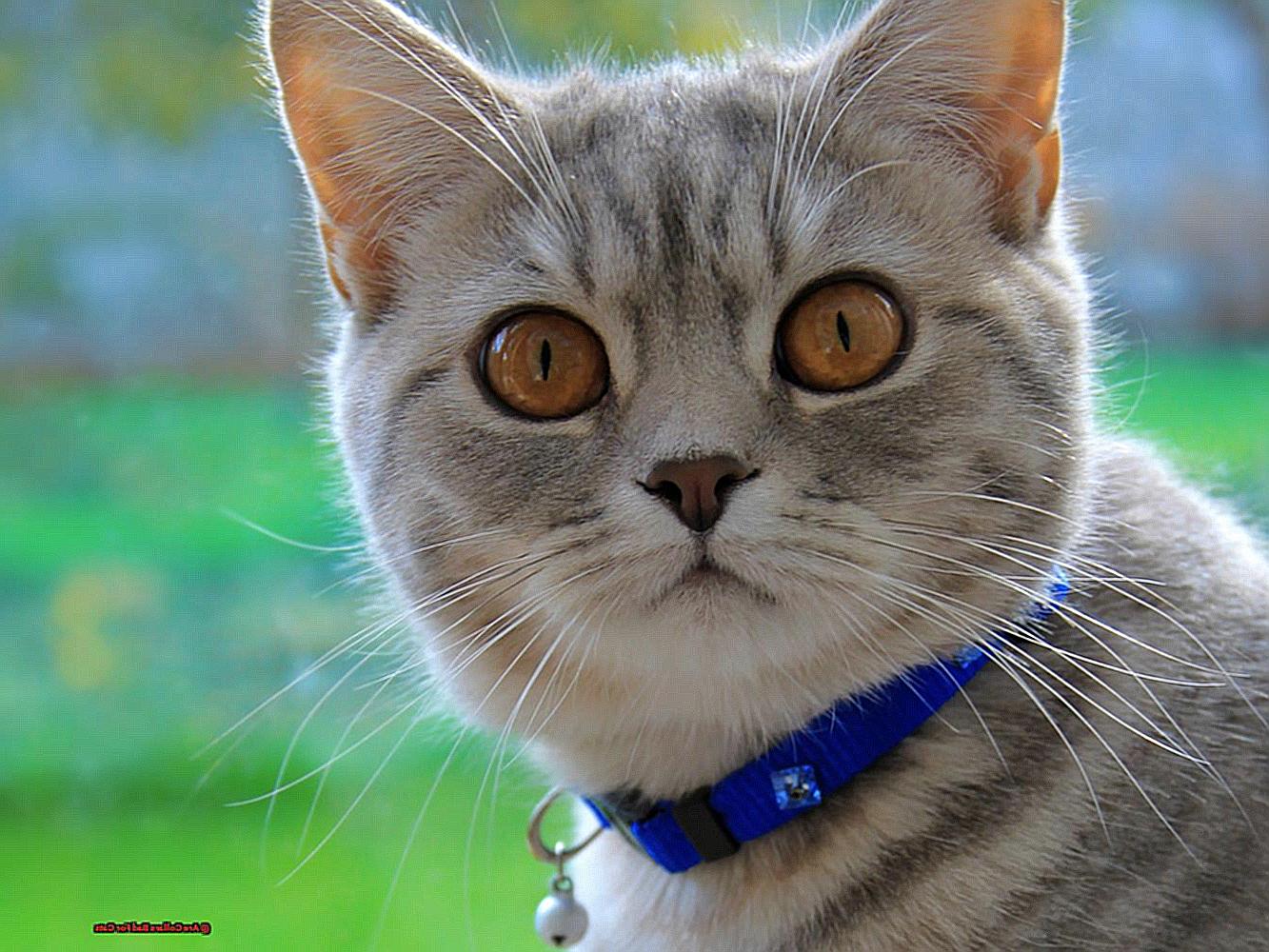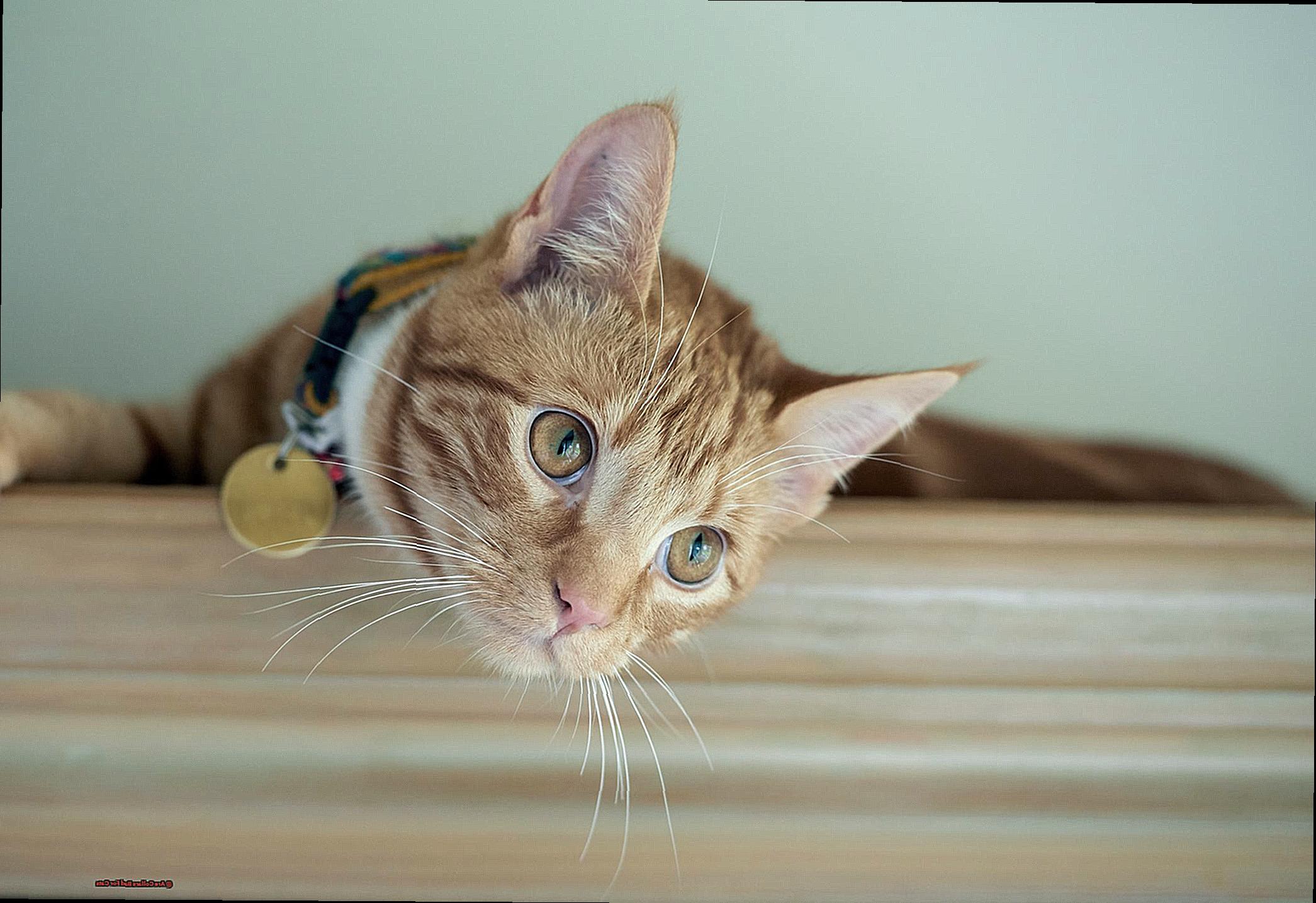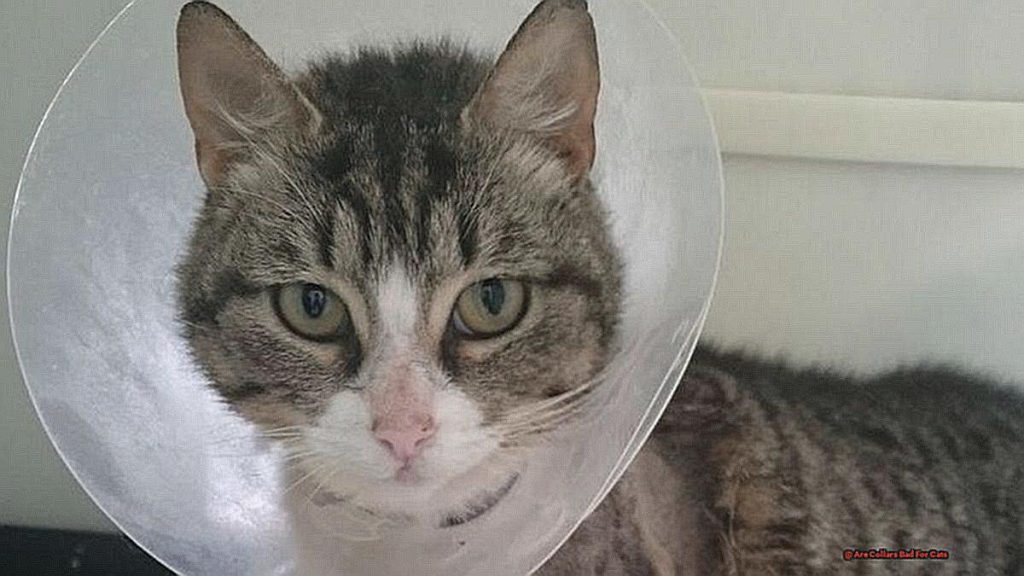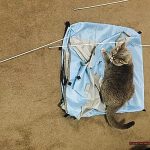Cats have been our loyal friends for hundreds of years. Their independence and grace make them very appealing.
When it comes to collars, though, cat owners have different thoughts. There are people who swear by them as a safety tool and people who say they do more harm than good.
What’s the deal with cat collars? We’ll look into the world of cat fashion and talk about the pros and cons of this controversial item in this post.
Whether you’ve had cats for a long time or are thinking about getting one, keep reading to find out the truth about this hotly discussed subject.
Are Collars Bad For Cats?
Contents

As a loving cat owner, you want to do everything in your power to keep your feline companion safe. One way to ensure their safety is by using a collar. But are collars bad for cats? The answer is not as simple as a yes or no. There are potential risks and benefits to consider when it comes to using collars on cats. As an expert on this topic, I’ll provide you with all the information you need to make an informed decision for your furry friend.
Benefits of Collars for Cats:
- Identification: The primary purpose of a collar is to hold identification tags. This can be crucial if your cat ever gets lost. With a collar and ID tag, anyone who finds your cat can easily contact you and return your beloved pet.
- Easy identification: Collars with bright colors or reflective materials can make it easier to spot your cat at night or in low light conditions.
- Fashion statement: Let’s face it, some cats look absolutely adorable in collars. It can be a fun way to show off your cat’s personality and style.
Risks of Collars for Cats:
- Strangulation: The most significant concern with collars is the risk of strangulation. If the collar is too tight or gets caught on something, it can choke or suffocate a cat.
- Material irritation: Some materials used for collars can cause irritation or even allergic reactions in cats, leading to discomfort and potential health issues.
- Getting caught on objects: Cats are known for their agility and ability to slip out of tight spaces. A collar can easily get caught while trying to escape, causing harm to the cat.
- Behavioral changes: Some cats may become anxious or stressed when wearing a collar, which can lead to behavioral issues such as excessive grooming or hiding.
Different Types of Collars for Cats and Their Pros and Cons
With so many options out there, it can be overwhelming to choose the right one. As an expert on the topic, I’m here to guide you through the different types of collars available for cats and their pros and cons.
Flat Collars
This is the most common type of collar for cats and is usually made of nylon, leather, or fabric. It has a buckle or snap closure and a D-ring for attaching tags and a leash. These collars are great for holding identification tags and can be easily adjusted for a comfortable fit. However, they can also pose a risk of strangulation if not fitted properly or if the cat gets caught on something while wearing it.
Breakaway Collars
These collars have a special safety feature that allows them to break open if the cat gets caught on something, preventing injury or strangulation. They are great for outdoor cats and provide peace of mind for pet owners. However, some cats may learn how to easily break these collars, rendering them useless.
Harnesses
These are becoming more popular for cats, especially for those who are leash-trained. They usually consist of straps that wrap around the cat’s chest and shoulders and have a D-ring for a leash attachment. Harnesses provide more control for walking cats and prevent neck injuries due to pulling on a collar. However, some cats may not enjoy wearing a harness and it may take time for them to get used to it.
Safety Release Collars
These collars have a similar safety feature as breakaway collars but are designed to stay on the cat even after breaking open. They provide safety while still keeping the collar on the cat. However, they may not break open easily enough in emergency situations.
Flea Collars
These collars contain chemicals that repel fleas and ticks from cats. They can provide protection against these pesky pests without the use of topical treatments. However, the chemicals can be harmful to cats if ingested or if the collar is worn for too long.
Elizabethan Collars
Also known as “cone collars,” these are used to prevent cats from licking or scratching wounds or stitches. They provide protection for healing wounds but can be uncomfortable and may cause difficulty with eating and drinking.
Potential Risks Associated with Collars for Cats
One way to do this is by using collars for identification and tracking purposes. However, before you rush out to get a collar for your cat, it’s important to understand the potential risks associated with them. As an expert on the topic, I have researched and compiled a list of potential dangers that cat owners should be aware of.
Choking Hazard
The most serious risk associated with collars for cats is the potential for choking. Cats are curious creatures and love to explore their surroundings, which can lead to getting their collar caught on objects such as furniture or branches. If this happens, the cat may not be able to free itself, leading to serious injuries or even death.

Hindering Movement
Cats are natural hunters and explorers, and wearing a collar can hinder their ability to move freely and safely. A collar can get stuck on branches, fences, or other objects, making it difficult for the cat to escape from potential dangers such as predators or traffic. This can put your cat at risk and cause unnecessary stress and anxiety.
Discomfort and Irritation
Cats have delicate necks, and wearing a collar can cause discomfort or pain if it is too tight or constantly scratched at by the cat. This can lead to irritation, hair loss, and even skin infections. It’s important to regularly check your cat’s collar for any signs of discomfort and adjust or replace it as needed.
Distractions and Stress
The bells or tags attached to collars can also be bothersome for cats. The noise they make can be distracting and cause stress and anxiety in some cats, affecting their overall well-being. This is especially important to consider if you have an older or more sensitive cat.
Unreliable Breakaway Mechanisms
Some collars come with breakaway mechanisms designed to release if the cat gets caught on something. However, these mechanisms are not always reliable and may not work in all situations, putting the cat at risk. It’s important to regularly check the collar and its mechanism to ensure it is functioning properly.
The Controversy Surrounding Collars for Cats: Arguments For and Against
There are strong opinions on whether or not cats should wear collars. While some say tags are helpful for finding lost cats and showing who owns them, others say they can be dangerous. As someone who knows a lot about the subject, I’ve looked into both sides of the debate through study and personal experience.
Some people who support collars say that having ID tags on a lost cat makes it easier to find. This is very important for cats that live outside and might get lost. By showing who owns the cat, collars can also help keep cats from getting into fights with other animals. Opponents, on the other hand, say that these perks may also come with risks.
An important worry about collars is that they could choke or get caught on things. Cats are known to be naturally curious, which means they can easily get themselves into trouble. With a collar that gets caught in trees or furniture, your cat could get hurt or even die. Itching and pain on the skin are also common problems with collars, especially if they are too tight or made of rough materials.
One more reason not to use collars is that they can get in the way of a cat’s normal behaviors, like cleaning and hunting. Some cats may get angry and stressed out because of this. There are more mistakes and injuries in cats that wear collars than in cats that don’t wear collars. In this way, a collar may make cat owners feel safer, but it may also put their cat in danger.
Microchipping, on the other hand, is a safe and effective way to find lost cats. Pet owners put a microchip under their cat’s skin that has all the necessary information about them. Being able to keep it on all the time unlike a collar makes it a more effective way to identify your pet.
Let’s talk about the kind of collar next. Breakaway collars are suggested by some experts because they can be easily removed if the cat gets caught on something. Some people say that even loose collars can still be dangerous for cats, even though this may seem like a better choice. If you want to avoid all of these risks, don’t put a tag on your cat at all.
Alternatives to Traditional Collars for Cats: Microchipping and GPS Tracking Devices
As a cat owner, you always want to do what’s best for your furry friend. This includes keeping them safe and identifiable in case they ever get lost. While traditional collars may seem like the obvious choice for achieving this, there are actually safer and more reliable alternatives available – microchipping and GPS tracking devices.
Let’s dive into the benefits of these alternatives and why microchipping is the superior option for your cat’s safety.
Microchipping: The Permanent and Safe Identification Solution
Microchipping involves implanting a tiny chip, about the size of a grain of rice, under your cat’s skin. This chip contains a unique identification number that can be scanned by a microchip reader, allowing lost cats to be reunited with their owners.
One of the biggest advantages of microchipping over traditional collars is that it is permanent and cannot fall off or get lost. This eliminates the risk of a collar causing harm to your cat if it gets caught on something. Additionally, microchips do not require any maintenance or replacement, making it a hassle-free option for pet owners.
But what about the safety and comfort of microchipping? Rest assured, numerous studies have shown that microchipping is a safe procedure with minimal risks. The chip is made of biocompatible material and is designed to stay in place without causing any adverse reactions in your cat’s body.
GPS Tracking Devices: An Added Layer of Security
If you have an outdoor cat who tends to wander far from home, or if you just want to keep an eye on your cat’s movements, GPS tracking devices are another alternative to traditional collars. These devices are attached to your cat’s collar or harness and use GPS technology to track their location.
One major benefit of GPS tracking devices is the ability to set up virtual boundaries or “geofences”. This means that if your cat leaves a designated area, you will receive an alert on your phone, allowing you to track their location and bring them back home safely.
However, it’s important to note that GPS tracking devices also have limitations. They must be attached to your cat’s collar or harness, which can potentially get lost or removed. Additionally, these devices require regular charging or battery replacement, which may be difficult for some pet owners to keep up with.
Proper Fit: Why Size Matters When It Comes to Cat Collars
One of the ways we do this is by putting a collar on them with our contact information, just in case they ever get lost. But did you know that proper fit is crucial when it comes to cat collars? In this section, we will explore the importance of ensuring your cat’s collar fits correctly and how to determine the right size for your feline friend.
The Dangers of Ill-Fitting Collars
Just like with any other accessory, a collar that is too tight or too loose can cause discomfort and even harm to your cat. A collar that is too tight can irritate their skin, restrict their breathing, and even cause choking. On the other hand, a collar that is too loose can easily get caught on something and potentially strangle or injure your cat. It can also slip off, leaving your cat without any identification or contact information in case they get lost.
Proper Fit is Essential for Your Cat’s Safety
Now that we know the dangers of using an ill-fitting collar on our cats, let’s talk about why proper fit is essential for their safety. A well-fitted collar ensures that your cat can move comfortably without any restrictions or discomfort. It also reduces the risk of the collar getting caught on something and causing harm to your cat.
How to Determine the Right Size for Your Cat’s Collar
Now that we understand why proper fit is crucial let’s discuss how to determine the right size for your cat’s collar. The best way to do this is by measuring their neck circumference accurately. Use a flexible measuring tape and wrap it around the base of their neck, leaving enough space for two fingers to fit between the tape and their skin. This measurement will give you an idea of what size collar to look for.
Consider Your Cat’s Weight and Activity Level
It’s also essential to consider your cat’s weight and activity level when choosing a collar size. A heavier or more active cat may require a larger and sturdier collar compared to a smaller or less active cat. This will ensure that the collar does not break or slip off easily.
Personal Experiences and Anecdotes Related to Cats Wearing Collars
In this post, I will discuss the various factors to consider when deciding whether to put a collar on your cat.
Potential Risks:
Collars can cause injury.
One of the main concerns with cats wearing collars is the potential for injury. There have been numerous cases where cats have gotten their collars caught on objects, leading to serious injuries or even death. This is especially true for outdoor cats who may roam and explore their surroundings. For example, a cat may climb a tree and get their collar stuck on a branch, causing choking or strangulation.
Escape artist cats.
Some cats are known for their ability to slip out of collars, which can be dangerous if the collar contains important identification tags or flea and tick prevention. The cat may lose these important items and be at risk of getting lost or contracting parasites.
Allergic reactions.
Cats can have sensitive skin and may develop allergic reactions to the materials in their collars. This can lead to irritation, scratching, and even hair loss around the neck area. In some cases, the allergic reaction may be severe and require medical treatment.
Comfort and stress.
While some cats may not mind wearing a collar, others may find it uncomfortable and stressful. This can lead to behavioral changes such as excessive grooming or hiding. It is important to regularly check your cat’s collar for any signs of discomfort or irritation.
Potential Benefits:
Reflective material for safety.
Many collars now come with reflective material that can help owners locate their cat at night or in low light situations. This can be especially helpful for outdoor cats who may roam at night.
Bells for hunting prevention.
Collars with bells can also be beneficial for preventing cats from hunting birds or other small animals. This can help protect local wildlife and keep your cat safe from potential prey.
Personal Anecdotes:
As an expert, I have heard many personal stories from cat owners about their experiences with collars. Some have had positive experiences with collars helping them locate their cat when they went missing. Others have shared stories of their cat getting injured from wearing a collar. These personal anecdotes offer valuable insight into the debate of whether collars are good for cats.
Conclusion
Finally, the issue about whether or not cats should wear collars is a complicated one, with good points made on both sides. Since we’ve talked about in this post, giving our cats collars comes with both risks and rewards that we should think about. Before making a choice, there are many things to think about, ranging from recognition and safety issues to comfort and stress levels.
Collars can give cat owners peace of mind and make cats look good, but they can also be dangerous because they can suffocate cats, irritate their skin, or change how they act. You should not take these risks easily and should give them a lot of thought before you put a tag on your cat.
Good news is that there are other ways to identify your cat that are safer and won’t put its health at risk. Cat microchips and GPS tracking devices are good ways to find lost cats without hurting or bothering them. And making sure the collar fits right is very important for your cat’s safety and happiness.
As someone who knows a lot about this subject, I have heard a lot of personal stories from cat owners about collars. The tracking tags on cats’ collars have helped some people find their lost cats, but they have also hurt other people or caused their cats to try to escape. Before deciding whether to put tags on our cats, these stories show how important it is to carefully weigh the possible risks and benefits.
In the end, each cat is different, and they may respond to collars in different ways. We should put our cat’s safety above all else because we are responsible pet parents. Remember to always make sure your furry friend is safe and relaxed, no matter what you choose—a tag or some other way to identify your pet.






